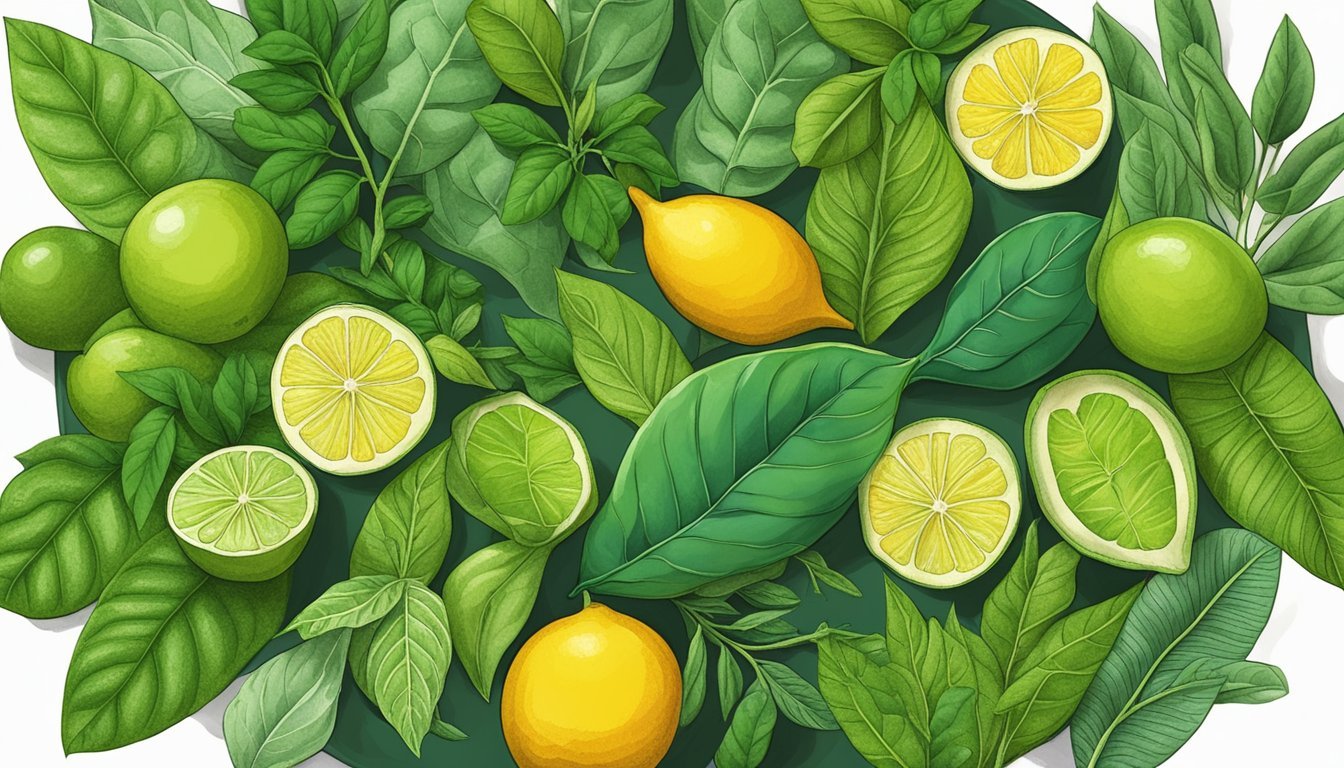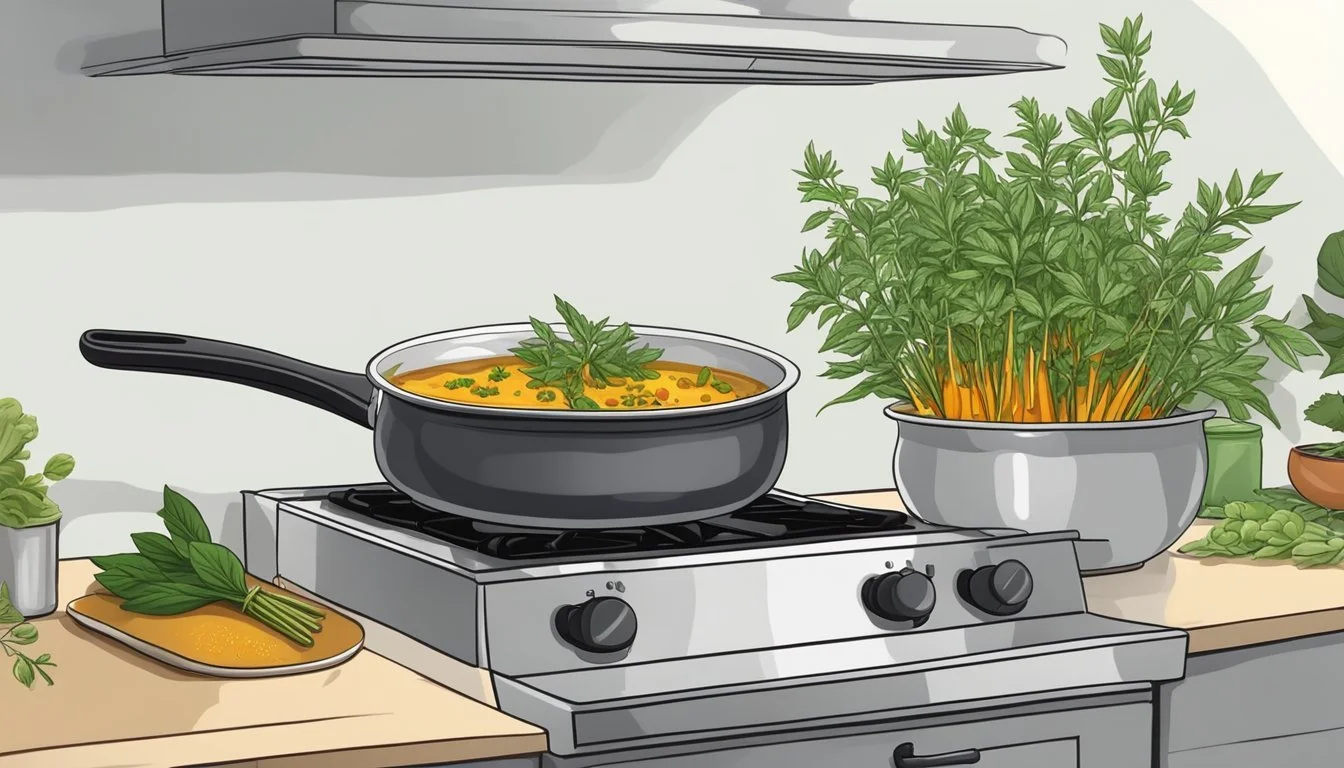Curry Plant Substitutes
Best Alternatives for Indian Cooking
Cooking enthusiasts often find themselves in need of a good substitute for curry leaves, an essential ingredient in various Indian and Asian dishes. When curry leaves are unavailable, substitutes like basil leaves, kaffir lime leaves, and even a combination of bay leaves and lime zest can replicate the unique aroma and flavor. These alternatives not only help in maintaining the authentic taste but are also more accessible in many regions.
Curry leaves impart a distinctive citrusy and slightly bitter flavor, making them irreplaceable in traditional recipes. However, fresh basil leaves, used in a 1:1 ratio, can mimic the essence quite effectively. Kaffir lime leaves, with their aromatic zest, are another excellent option, especially for more elaborate dishes.
Experimentation with substitutes can also lead to discovering new flavor combinations. For instance, mixing basil leaves with a touch of lime zest can add a refreshing twist to a dish. Such alternatives ensure that one's culinary creations continue to impress, even when specific ingredients are hard to find.
Understanding Curry Leaves
Curry leaves are an essential ingredient in many Indian dishes, known for their unique aroma and health benefits. They contribute significantly to the flavor and nutritional content of various recipes.
The Unique Profile of Curry Leaves
Curry leaves possess a profile marked by their aromatic, pungent, and citrusy characteristics. These vibrant green leaves are often used fresh rather than dried to retain their nuanced flavor. When added to hot oil, their release of aroma is immediate, filling the kitchen with an earthy fragrance. This transformation showcases their integral role in Indian cooking.
Culinary Uses of Curry Leaves
Curry leaves are indispensable in South Indian dishes. They enhance the flavor of curries, soups, rice dishes, and chutneys. Typically, they are tempered in oil along with mustard seeds and other spices at the start of cooking, infusing the dish with their distinct essence. Curry leaves also serve as a garnish, adding a burst of aroma and flavor right before serving.
Health Benefits of Curry Leaves
Rich in antioxidants, curry leaves offer several health benefits. They are known for their anti-inflammatory properties, potentially lowering the risk of chronic diseases, including certain cancers. The leaves are a good source of iron and calcium, contributing to bone health and combating anemia. Additionally, their antibacterial properties support a healthy immune system, making them a valuable addition to a nutritious diet.
Common Substitutes for Curry Leaves
When curry leaves are unavailable, there are several excellent substitutes that can be used to mimic their distinct flavor and aroma. These alternatives include both herbal and citrus-based options, as well as other leafy substitutes that can bring similar freshness and complexity to dishes.
Herbal Alternatives
Basil Leaves
Basil is a versatile aromatic herb commonly used in Mediterranean cuisine. It offers a sweet, floral aroma and can be used fresh or dried. While it doesn't exactly replicate curry leaves, basil provides a mild licorice essence that works well in various curries and soups.
Mint Leaves
Mint leaves bring a refreshing, cool flavor to dishes. They can be used fresh to add a burst of freshness similar to curry leaves. Mint’s distinctive menthol notes add complexity, although they are less citrusy compared to curry leaves.
Lemon Balm Leaves
Lemon balm is another herb that can substitute curry leaves in recipes. It has a mild lemon scent and flavor, contributing a subtle citrus note. This herb is especially suitable for lighter dishes where a hint of lemon freshness is desired.
Citrus-Based Substitutes
Lemon Zest
Lemon zest, particularly from unwaxed lemons, can be an effective substitute. The zest offers a strong citrus flavor and aromatic qualities similar to curry leaves. It is best used in dishes where the citrusy essence can be highlighted.
Lime Zest
Lime zest provides a more intense citrus flavor compared to lemon zest. It's aromatic and vibrant, suitable for enhancing the freshness and tanginess of dishes. Both fresh and dried lime zest can be used to add a punch of citrus flavor.
Makrut Lime Leaves
Makrut lime leaves, also known as kaffir lime leaves, are an exceptional substitute for curry leaves. These leaves have a unique, aromatic citrusy flavor that closely approximates the taste of curry leaves. They can be used whole or sliced, dried or fresh, making them a versatile replacement.
Other Leafy Substitutes
Bay Leaves
Bay leaves are a common aromatic leaf used in a variety of cuisines. While they are not citrusy, their robust, slightly bitter flavor pairs well with hearty dishes like stews and soups, providing a depth of flavor similar to curry leaves.
Cilantro (Coriander) Leaves
Coriander leaves, or cilantro, offer a fresh, slightly tangy flavor profile. While they don't have the exact taste of curry leaves, their bright and herbaceous qualities can enhance the overall flavor profile of a dish.
Daun Salam Leaves
Daun salam leaves, or Indonesian bay leaves, bring a mild, aromatic flavor to dishes. They are a suitable substitute in Southeast Asian recipes where curry leaves are traditionally used. These leaves add a hint of earthiness and a subtle aromatic quality.
Cooking with Curry Leaf Substitutes
When using substitutes for curry leaves, selecting the right alternative is crucial. Substitutes like kaffir lime leaves, basil, lemon zest, and others each bring unique flavors to various dishes.
Adapting Recipes for Substitutes
Adapting a recipe to use a curry leaf substitute involves understanding the flavor profile of the substitute. For instance, kaffir lime leaves bring a citrusy note, making them great for soups and seafood. Basil, with its sweet and floral attributes, is suitable for curries and Mediterranean dishes. Adjust the quantity to match the potency; usually, half the amount of kaffir lime leaves or twice the amount of dried curry leaves works well.
Matching Substitutes to the Dish Type
Selecting the right substitute depends on the dish type. Lemon zest adds a fresh, tangy flavor ideal for fish dishes, coconut milk-based curries, and salads. Bay leaves, with their earthy notes, are perfect for meats, dals, and European stews. Makrut lime leaves blend well in sauces and Asian dishes. For a milder, sweeter taste, basil pairs nicely with European and Mediterranean recipes requiring a more subtle aromatic presence.
Taste Adjustments and Ratios
When using substitutes, make taste adjustments to balance the dish. Kaffir lime leaves are potent; use half as many to avoid overpowering the flavor. Dried curry leaves require double the amount compared to fresh ones. If substituting with lemon zest, start with a pinch and increase as needed. List of ratios:
Fresh Curry Leaves: 10 leaves
Dry Curry Leaves: 20 leaves
Kaffir Lime Leaves: 5 leaves
Lemon Zest: 1/4 tsp per 10 curry leaves
Maintaining balance is key, as improper ratios can significantly alter the intended taste. Adjust seasoning and other spices like cumin or coriander to ensure a harmonious flavor profile.
Additional Tips for Using Substitutes
When substituting curry leaves, it's essential to consider the differences between fresh and dried options and the nuances in preservation, storage, and health implications. The right choice can enhance the aroma and health benefits of your dishes.
Fresh vs. Dried Substitutes
Fresh curry leaves are often preferred for their vibrant aroma and flavor. They provide a citrusy and slightly bitter taste that is difficult to replicate perfectly. When using dried curry leaves, one must typically double the quantity to achieve a similar flavor profile as fresh leaves.
Substitutes for fresh curry leaves include:
Kaffir lime leaves: Use half the amount needed for fresh curry leaves.
Lemon zest: Offers a bright citrus note but lacks the complexity of curry leaves.
Substitutes for dried curry leaves include:
Bay leaves: Provide a sweet, earthy, and citrusy taste.
Basil leaves: Add a subtle, sweet flavor that complements many dishes.
Preservation and Storage
Proper storage extends the life and potency of your substitutes. Fresh curry leaves should be stored in an airtight container or wrapped in a damp cloth and kept in the refrigerator. They retain better flavor when used within a week.
Dried curry leaves should be stored in an airtight container in a cool, dry place. This prevents them from losing essential oils and aroma over time. The same applies to substitutes like:
Kaffir lime leaves: Best stored in the freezer to maintain freshness.
Bay leaves: Store in a sealed container away from light.
Lemon zest: Can be frozen to retain its potency.
Health Considerations
When selecting substitutes, it's important to consider their health benefits. Curry leaves are known for their antioxidants, which may help reduce inflammation and support the nervous system.
Health considerations for some substitutes:
Kaffir lime leaves: Also offer antioxidants and may aid digestion.
Bay leaves: Have antioxidant properties and may help with blood sugar regulation.
Lemon zest: Rich in vitamin C and antioxidants, it supports immune health.
Each substitute brings its own set of health benefits, making them valuable choices based on specific dietary needs.






